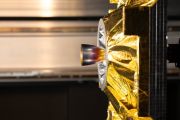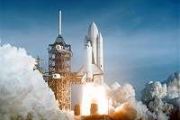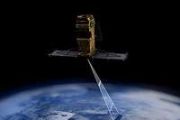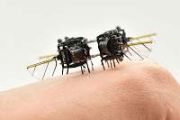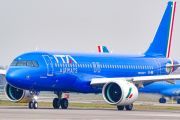
Copernical Team
Royal Canadian Navy selects MDA Space for next generation drone surveillance systems
 MDA Space Ltd. (TSX:MDA) has secured two major contracts from the Royal Canadian Navy (RCN) to deliver up to six advanced Uncrewed Aircraft Systems (UAS) for Halifax-class frigates. The agreements support the Intelligence, Surveillance, Target Acquisition and Reconnaissance (ISTAR) UAS initiative, designed to expand the Navy's maritime threat detection and situational awareness capabilities in C
MDA Space Ltd. (TSX:MDA) has secured two major contracts from the Royal Canadian Navy (RCN) to deliver up to six advanced Uncrewed Aircraft Systems (UAS) for Halifax-class frigates. The agreements support the Intelligence, Surveillance, Target Acquisition and Reconnaissance (ISTAR) UAS initiative, designed to expand the Navy's maritime threat detection and situational awareness capabilities in C SES Secures 5 Year Army Contract for Global Tactical Satellite Communications
 SES Space and Defense, a wholly-owned subsidiary of SES, has been awarded a five-year, $89.6 million Sustainment Tactical Network (STN) contract to deliver commercial satellite communications (COMSATCOM) services to the U.S. Army.
The contract will enable long-haul network transport and communications infrastructure for Combat Service Support units, Department of Defense programs, and othe
SES Space and Defense, a wholly-owned subsidiary of SES, has been awarded a five-year, $89.6 million Sustainment Tactical Network (STN) contract to deliver commercial satellite communications (COMSATCOM) services to the U.S. Army.
The contract will enable long-haul network transport and communications infrastructure for Combat Service Support units, Department of Defense programs, and othe Space Force taps five firms to develop secure global tactical satcom solutions
 Space Systems Command (SSC), the United States Space Force's primary acquisition unit, has awarded a Protected Tactical Satellite Communications - Global (PTS-G) IDIQ contract with five initial firm fixed-price delivery orders totaling $37.5 million. The awards went to Viasat, Northrop Grumman, Astranis, Intelsat General Communications, and Boeing.
The PTS-G program aims to deliver enhance
Space Systems Command (SSC), the United States Space Force's primary acquisition unit, has awarded a Protected Tactical Satellite Communications - Global (PTS-G) IDIQ contract with five initial firm fixed-price delivery orders totaling $37.5 million. The awards went to Viasat, Northrop Grumman, Astranis, Intelsat General Communications, and Boeing.
The PTS-G program aims to deliver enhance DefendEye adds Starlink Mini to tube drone system for real time global search ops
 DefendEye has announced the integration of Starlink Mini into its tube-launched autonomous AI-powered search drone system, delivering global satellite connectivity without reliance on cellular infrastructure. The embedded Starlink Mini allows users to deploy the drone in virtually any location while maintaining encrypted high-definition video streaming to operations centers and mobile devices.
DefendEye has announced the integration of Starlink Mini into its tube-launched autonomous AI-powered search drone system, delivering global satellite connectivity without reliance on cellular infrastructure. The embedded Starlink Mini allows users to deploy the drone in virtually any location while maintaining encrypted high-definition video streaming to operations centers and mobile devices. Deloitte launches Silent Shield system to monitor satellite cyber threats
 Satellites play a critical role in daily life, supporting everything from navigation and agriculture to communications and national defense. However, many orbiting assets remain vulnerable to cyber threats due to inadequate protection. To address this growing risk, Deloitte has developed and deployed Silent Shield, a space-based system designed to detect anomalies and cyber intrusions and provid
Satellites play a critical role in daily life, supporting everything from navigation and agriculture to communications and national defense. However, many orbiting assets remain vulnerable to cyber threats due to inadequate protection. To address this growing risk, Deloitte has developed and deployed Silent Shield, a space-based system designed to detect anomalies and cyber intrusions and provid China expands satellite internet network with second Long March 12 launch
 China successfully launched a new batch of internet satellites on Monday using its Long March 12 rocket, further advancing the country's commercial space infrastructure.
The launch occurred at 6:21 pm local time from the Hainan commercial spacecraft launch site in southern China. The rocket deployed the seventh group of low-Earth orbit internet satellites into their designated orbit, marki
China successfully launched a new batch of internet satellites on Monday using its Long March 12 rocket, further advancing the country's commercial space infrastructure.
The launch occurred at 6:21 pm local time from the Hainan commercial spacecraft launch site in southern China. The rocket deployed the seventh group of low-Earth orbit internet satellites into their designated orbit, marki Rocket Lab expands iQPS satellite network with successful Electron launch
 Rocket Lab Corporation (Nasdaq: RKLB) has completed its 69th Electron mission, successfully deploying another satellite for the Institute for Q-shu Pioneers of Space, Inc. (iQPS). The launch marks the fifth dedicated mission for iQPS under a multi-launch agreement supporting the expansion of their synthetic aperture radar (SAR) satellite constellation in low Earth orbit.
The mission, title
Rocket Lab Corporation (Nasdaq: RKLB) has completed its 69th Electron mission, successfully deploying another satellite for the Institute for Q-shu Pioneers of Space, Inc. (iQPS). The launch marks the fifth dedicated mission for iQPS under a multi-launch agreement supporting the expansion of their synthetic aperture radar (SAR) satellite constellation in low Earth orbit.
The mission, title First asteroid sightings push Hera’s camera to the limit

ESA’s Hera mission has captured images of asteroids (1126) Otero and (18805) Kellyday. Though distant and faint, the early observations serve as both a successful instrument test and a demonstration of agile spacecraft operations that could prove useful for planetary defence.
Hera is currently travelling through space on its way to a binary asteroid system. In 2022, NASA’s DART spacecraft impacted the asteroid Dimorphos, changing its orbit around the larger asteroid Didymos. Now, Hera is returning to the system to help turn asteroid deflection into a reliable technique for planetary defence.
Watch: MetOp-SG-A1 and Sentinel-5 launch

Europe’s first MetOp Second Generation, MetOp-SG-A1, weather satellite – which hosts Copernicus Sentinel-5 as part of its instrument package – is set for liftoff on an Ariane 6 rocket from Europe’s Spaceport in Kourou, French Guiana, on 13 August 2025 at 02:37 CEST (12 August 21:37 Kourou time).
Watch live on ESA Web TV One.
When martian ground falls apart

In its latest postcard from Mars, the European Space Agency’s Mars Express returns to Acheron Fossae: a dramatic network of chasms carved into the surface of the Red Planet.













